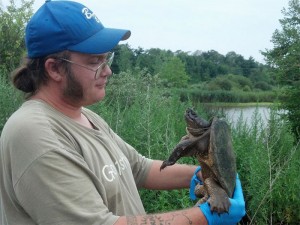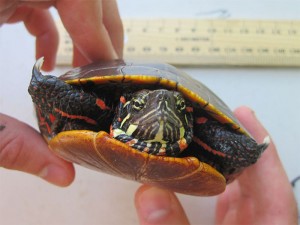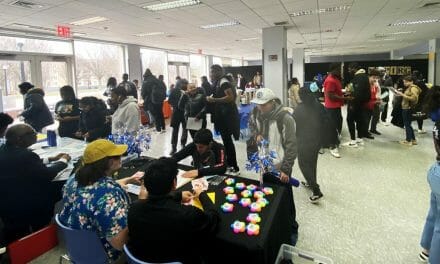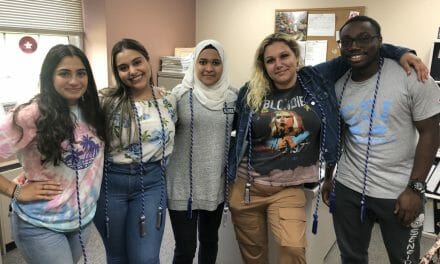As habitat alteration is the top threat to biodiversity globally, Dr. Eugenia Naro-Maciel and a team of student researchers at the College of Staten Island and The Graduate Center, CUNY are researching Freshkills Park on Staten Island in New York City, site of the infamous former landfill. They are investigating how the transformation from what once was the world’s largest landfill is proceeding as it becomes parkland, with a focus on its freshwater turtle communities.
As the turtles found at Freshkills, including painted and snapping turtles commonly found around the country, are relatively sedentary, long-lived reptiles capable of occupying high positions in the food web, they can be monitored to provide insights into the habitat restoration. Dr. Naro-Maciel, an Assistant Professor in Biology at CSI, is joined by her PhD student Seth Wollney and a team of graduate and undergraduate students as they investigate the diet, health, demography, and genetics of the turtle communities.
[youtube]http://www.youtube.com/watch?v=th1IQpkH9oQ&feature=c4-overview-vl&list=PL7653D036578F4847[/youtube]Their research is providing entirely new information on this once destroyed habitat that is now reclaimed parkland. Study collaborators include researchers at Freshkills Park, the Staten Island Museum, the Staten Island Zoo, and the American Museum of Natural History. CSI undergraduate student researchers include Robert Pashayan, Juan Sebastian Mafla, Jenna Pantophlet, Jarred Sutton, and others. Ella Viola is a Master’s-degree student working on Freshkills genetics.

Seth Wollney holds a snapping turtle in Freshkills Park, home of the CSI Research Team this past summer.
“We are looking into the health and population biology of freshwater turtles to better understand the turtles’ response to the process of habitat reclamation,” noted Wollney. “Working at Freshkills provides a wonderful study location as it is recently converted form a landfill into a naturalized area.”
Dr. Naro-Maciel, the principal investigator added that FreshKills as a “novel research site is an interesting and complex local case study: until recently it was the largest landfill in the world and is now undergoing the remarkable process of being transformed into a park planned to benefit humans and wildlife alike. The unique nature of Freshkills, its location near CSI, its global significance as an example of restoration ecology, the comprehensive ecological nature of the research, student interest, and our collaborative partnerships all make this an ideal research project.”
According the NYC Parks Department Website, Freshkills Park will feature creeks, wetlands, expansive meadows, and spectacular vistas of the New York City region. The 2,200-acre Freshkills Park will be almost three times the size of Central Park when its 30-year plan is implemented, making the park a symbol of renewal and an expression of how our society can restore balance to its landscape. In addition to providing a wide range of recreational opportunities, including many uncommon in the city, the park’s design, ecological restoration, and cultural and educational programming will emphasize environmental sustainability and a renewed public concern for our human impact on the Earth.
The research team hopes to gain further insights into habitat utilization, dietary and foraging patterns, health parameters, and genetic diversity, as well as population structure and the effects that park visitation may have on turtle populations. The findings were well received at the Society for Conservation Biology’s Annual Meeting in Maryland, and were submitted to peer-reviewed journals. So little is known about these communities that the study is providing entirely new information on this once destroyed but now reclaimed parkland.

![[video] Turtles of the Freshkills Park Reclaimed Ecosystem](https://csitoday.com/wp-content/uploads/2013/08/Painted-Turtle.jpg)

















